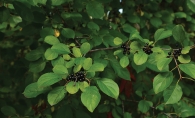
With fall in the air and winter creeping closer, the time is now to begin considering how to divide and conquer your perennials in preparation for spring. We turned to Lake Minnetonka native Alison Feik, owner of Being Strong in Nature, which offers soft-scaping garden services, to help brighten up our green thumbs.
Are all perennials good for dividing?
Many perennials don’t want or need to be divided. Shrubs or woody species typically aren’t divided. Many herbaceous plants, however, do benefit from periodic dividing or thinning. In some species, you’ll know the plant is ready for dividing if the center has begun to die back. A daylily or sedum, for example, may be growing in what looks like a ring. This is a good indication that the plant will benefit from having sections dug up and moved to new locations. Other plants, like iris or hosta, are often found growing too tightly together. This crowding can negatively affect both foliage and blooming and the overall appearance of the garden.
How does the plant benefit from dividing?
Dividing a plant stimulates new growth and more abundant blooms. It also eliminates the occurrence of a dead middle section.
When is it best to divide and replant?
The best time to divide is after the plant has finished blooming and before the bitter cold (because that’s no fun!). You never want to move a plant while it’s concentrating its energy on making flowers. Therefore, if you have a late-blooming species, such as asters or chrysanthemums, you want to divide them in the spring instead.
Is there anything special that needs to be done during replanting?
First, make sure you are planting a big enough chunk of plant, so that it has sufficient root mass to reestablish itself ... Secondly, make sure you break up the soil in the area you’ll be transplanting into, making it easier for the roots to expand out and water to soak in. Lastly, make sure to give the plant a good drink right after transplanting to reduce the shock of being uprooted and replanted.
How often should the plants be watered?
After transplanting, water immediately. This includes the transplanted sections, as well as the original plant you’ve divided. For the first week or two, water every day, especially if it is hot and dry outside. After that, you can water every few days until Thanksgiving.
What about putting mulch over the plants prior to the first frost?
If you have zone four plants, you don’t typically need to mulch before frost. Sometimes people will plant zone five species, and it’s an insurance policy to mulch some of these plants to keep them well-insulated over the winter. This is especially true in years where we don’t have a deep snowpack, as snow also works to insulate [plants] from the bitter cold.
Do you need to cut back any of the foliage prior to or just after the first frost?
Keeping foliage up over the winter gives wonderful winter interest, habitat for beneficial pollinators and seeds for the birds to eat. Some of my favorite plants for winter interest are echinacea, liatris and sedum. I do, however, recommend cutting back plants before transplanting. This reduces the amount of evapotranspiration or water lost by the leaves. This allows the plant to concentrate its energy on root establishment.
How often should you divide a plant?
Divide plants as needed. This can be a matter of taste. I have one client who has me divide his iris every single year, and they do just great. Many people like space around their individual plants as opposed to them growing into one mass of a garden. In this case, divide plants when they are growing too close to one another. Looking for the dead middle zone is also a clear indicator to give that plant the opportunity to change shape and expand its real estate.
What happens if you don’t divide a perennial?
A lot of perennials don’t need dividing. However, for those that do, the plant will become less than its most vibrant self. Often, a plant will fall over when it flowers if it’s overdue to be divided. This may be a good indicator that it’s time to divide, or perhaps this particular plant would benefit from staking.
Can roots be damaged when dividing the plant?
Roots will be damaged. The process of dividing can look rather destructive at first glance … The plant will recover, don’t worry. Especially if you have prepped the area well and given the plant water as soon as possible. Don’t let the roots dry out or sit in the hot sun.
If you can’t transplant them immediately, keep the roots in the shade and even cover them with a tarp to keep them from losing too much moisture.
What tools are best used?
I like to use a small spade and a big bucket. Use a sharp spade to divide the plant down the middle or some variation of the middle, depending on the form of the individual plant. Then lift the plant up partially by grabbing the leaves and stalks themselves and partly by using the spade as a scoop. I then put this removed section into a big bucket to transport it to its new location. This way, any soil that falls off will remain in the bucket and can be used to fill in the new hole.
Does "first year, sleep; second year, creep; and third year, leap" apply in this case?
The first year after moving a plant in the fall, don’t expect much action. The plant is concentrating on root growth, and you may have already cut back much of its upper biomass. The second year, it will continue to establish itself, although perhaps not at the same level of vigor as the original plant. By the third year, the plant will be living its best life, [and] you may even consider dividing again at this point.
Being Strong in Nature
Facebook: Garden Legacy
Instagram: @alison.feik









